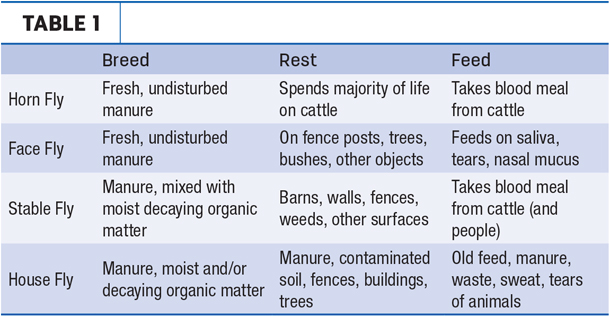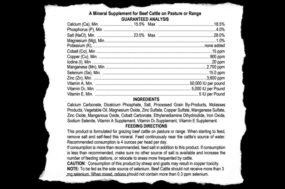A change in seasons often brings positive things to look forward to, from refreshing weather to improved environmental conditions. Not so with fly season. While the appearance of these pests can be a challenge, there are proactive steps producers can take throughout the season to help minimize their impact.
Pre-season
Prior to the start of fly season, it’s time to do a little early “spring cleaning.” This can include:
- Eliminating potential breeding areas by removing leftover hay and other spilled feeds from winter feeding; this should include tilling the areas around round bale feeders to help dry these areas out and reduce stable fly breeding there.
- Cleaning facilities, particularly areas with manure, to eliminate potential breeding grounds.
- Ensuring standing water is limited to what is necessary.
Beginning of season
Once spring has sprung and fly season begins, it’s time for producers to implement their fly control plan. When doing so, it’s important to have a good understanding of the types of flies that pose the biggest threat to an operation.
Not all flies are the same, so knowing the type of flies you’re dealing with (and where they breed, rest and feed) is necessary to help you choose the best strategies and products to control them.

Horn flies and face flies are almost always associated with cattle on pasture. House flies and stable flies are most often found around confined cattle and their premises. Once producers know what flies are an issue, they can better determine how to fight them.
Mid-season
As spring turns into summer, producers should take time to monitor and evaluate their fly control efforts and make any adjustments needed based on fly pressure. Some of the more common issues may include:
- A resurgence of flies, often brought about by a weather change. For example, rainfall after an extended dry spell.
- An abundance of flies from not initially treating properly for fly control.
- Eartags wearing out, especially in locations with longer fly seasons.
Fortunately, creating and implementing a mid-season strategy can still help producers defend against the impact of potentially damaging pests.
Post-season
Once fly season ends, producers should take steps to prepare for the next season, including removing eartags to avoid resistance issues. In addition, producers should take the time to evaluate what was most effective and determine any adjustments to make the next season. ![]()
Doug Ross is the senior technical services entomologist with Bayer Animal Health.
PHOTO: Photo provided by Thinkstock.






